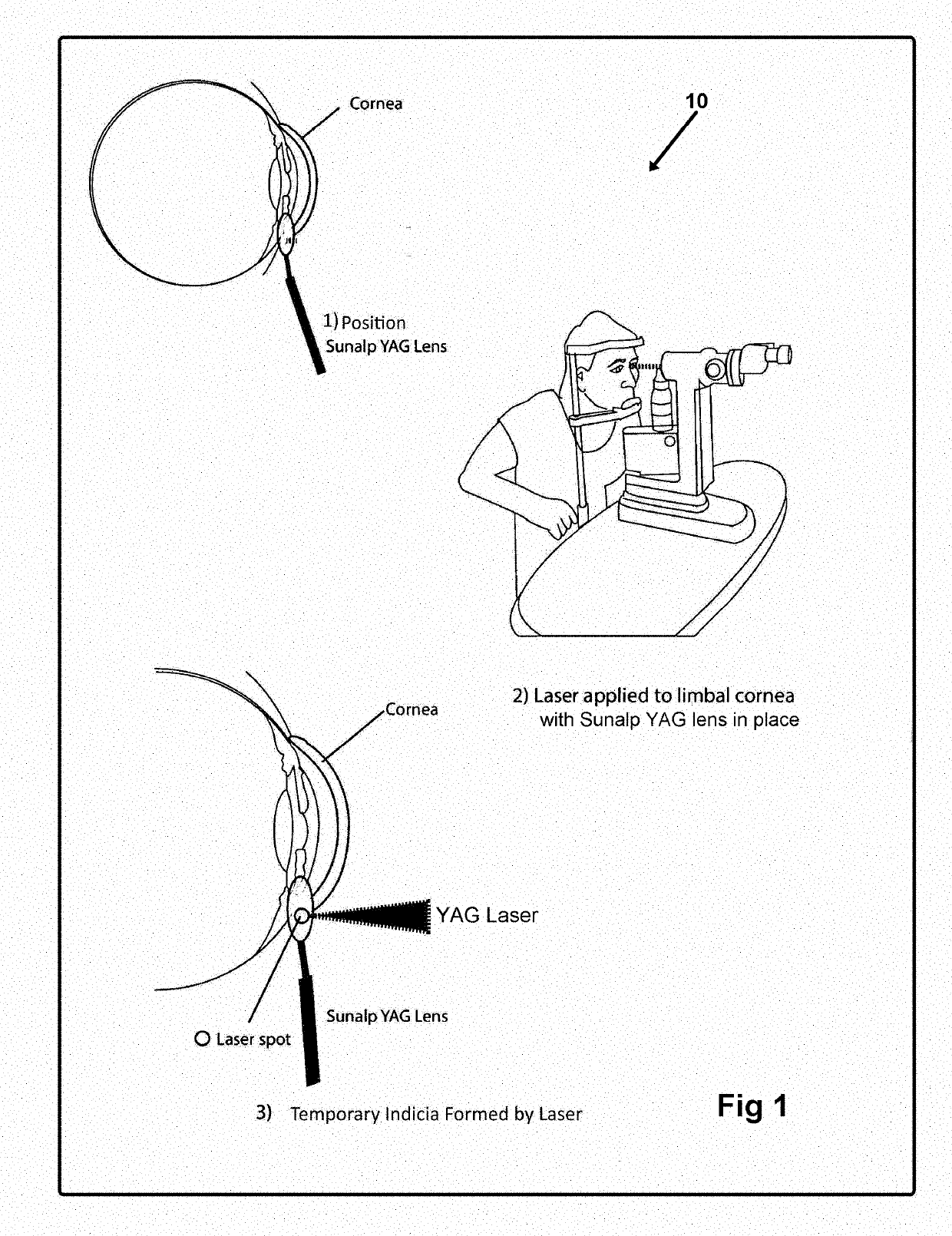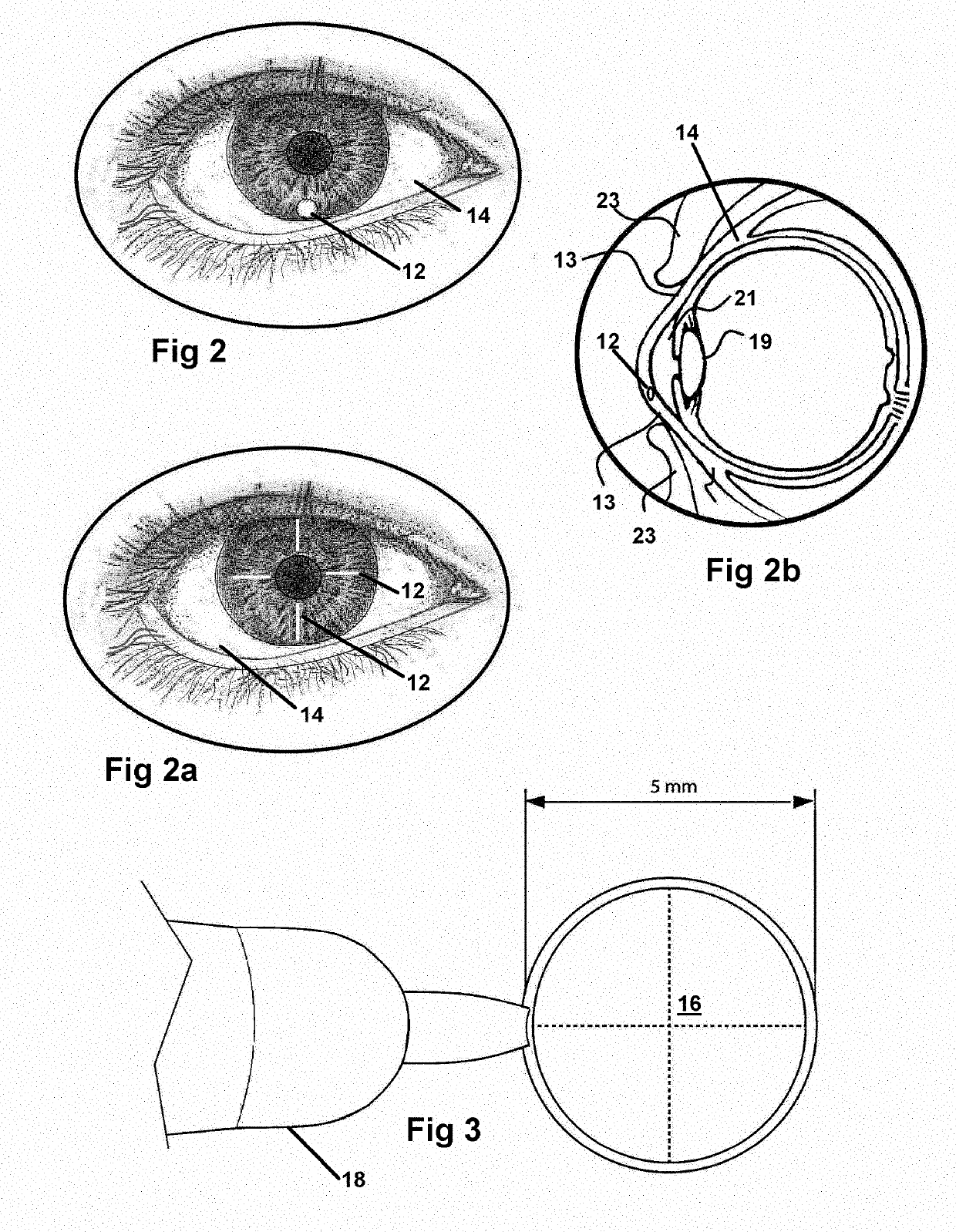Device and Method for Axis Marking
a marking device and axis technology, applied in the field of eye surgery, can solve the problems of significant potential errors in significant loss of corrective power to the patient, and significant affecting the alignment of the implanted lens, etc., and achieve the effect of high accuracy
- Summary
- Abstract
- Description
- Claims
- Application Information
AI Technical Summary
Benefits of technology
Problems solved by technology
Method used
Image
Examples
Embodiment Construction
[0059]Now referring to drawings in FIGS. 1-13, wherein similar components are identified by like reference numerals, there is seen in FIG. 1, the steps in the method 10 herein disclosed for imparting markings into the cornea between 40-450 microns below the surface thereof. The formed temporary markings are subsequently employable for implanted lens orientation and will not move or erase for substantially two days.
[0060]In all modes of the method, at least one lens 16 for targeting the laser is positioned adjacent or upon the eye of the patient in a position where a marking 12 is desired. Once so positioned, in a next step, a YAG laser or other directed energy device is communicated through the targeting lens 16 and is focused to a focal point between 40 and 450 microns, below the surface of the cornea, within the corneal layer of the eye. The laser communicating through the lens 16 forms the markings 12 at the depth of and in a position within the cornea, determined by the lens 16 ...
PUM
 Login to View More
Login to View More Abstract
Description
Claims
Application Information
 Login to View More
Login to View More - R&D
- Intellectual Property
- Life Sciences
- Materials
- Tech Scout
- Unparalleled Data Quality
- Higher Quality Content
- 60% Fewer Hallucinations
Browse by: Latest US Patents, China's latest patents, Technical Efficacy Thesaurus, Application Domain, Technology Topic, Popular Technical Reports.
© 2025 PatSnap. All rights reserved.Legal|Privacy policy|Modern Slavery Act Transparency Statement|Sitemap|About US| Contact US: help@patsnap.com



